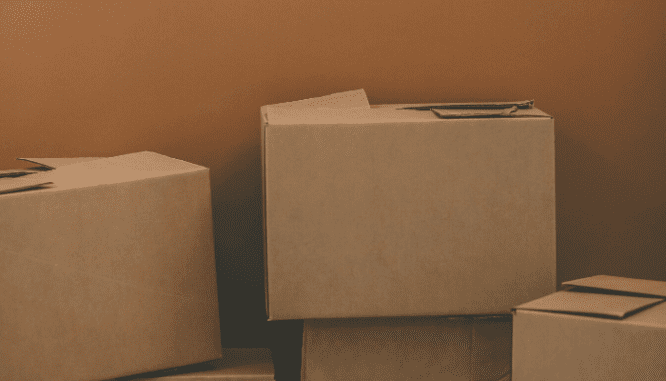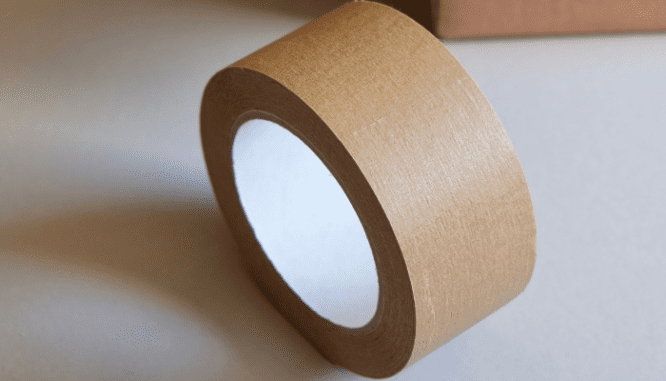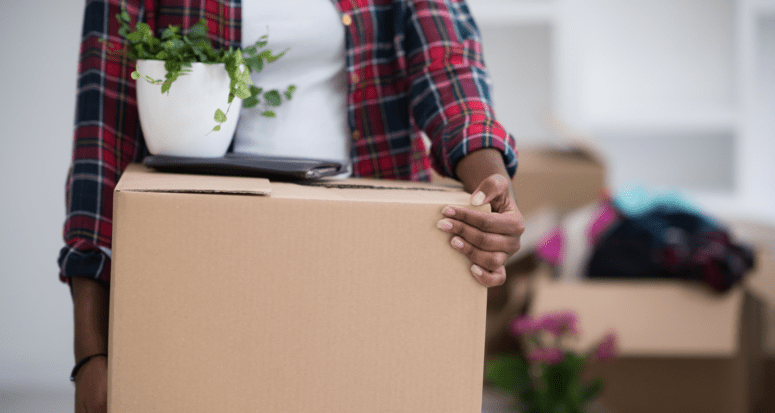The Ultimate Guide to Finding Moving Boxes — No Matter Your Budget
- Published on
- 4 min read
-
 Olivia Forgette Contributing AuthorClose
Olivia Forgette Contributing AuthorClose Olivia Forgette Contributing Author
Olivia Forgette Contributing AuthorOlivia Forgette is a real estate marketing specialist, writer, and homeowner who enjoys using her experience to help buyers and sellers feel informed and confident during their big real estate transactions. When not writing and blogging, you can find her playing with her dog, or in the kitchen baking some homemade sweet treats.
Moving can be daunting, not to mention expensive. But making sure you have an ample supply of moving boxes doesn’t have to break the bank.
Packing up your entire life into a truck and shipping it off to your new home sweet home is no easy feat. But have no fear. We’re here with expert knowledge to help you learn some decluttering and packing tips, along with the best ways to source the right moving boxes and keep your budget intact.

Ditch the clutter
The key to having a stress-free move is to prepare. We’ve all seen the minimalist, Pinterest-perfect homes online and on television, but chances are that is not your reality. Decluttering your belongings before the process begins is the perfect first step in your big move.
Sandy Jamison, a top HomeLight agent from San Jose, California, shares some advice: “I tell my clients, if you haven’t touched it [for] several years, maybe it’s time to send it to charity or the dump.” She continues to explain that often, moving costs are determined by weight, so don’t bring what you don’t need. It is important to consider if moving that old, heavy sofa is really worth the extra expense, when, instead, you can save that money and purchase something new on the other end of your move.
Decluttering your belongings may be easier said than done. There is often sentimental attachment, or fear of purging something you may need in the future. These are valid concerns; however, it is recommended that you minimize the amount you will need to move. Check out these tips for decluttering:
Start by not adding to the problem! Don’t purchase more things before your move and make the process even more painful.
Give yourself plenty of time to downsize your items. Rushed = stressed.
Start small. Focus on small sections of your home — rather than the entire house — to feel less overwhelmed.
Track your progress with photos! Seeing before-and-after images of your space will help motivate you to keep purging unnecessary items.
Get rid of obvious trash first. If you won’t be hanging onto it, throw it out or donate it immediately.
Determine your box budget
Now that you’ve decluttered, it’s time to determine your box budget and how that fits into your overall moving budget. If you’re hiring professional movers, you can expect to pay at least $1,000 for the move. The average household move in the U.S. costs about $1,250, but this varies widely depending on the size of your home, the moving distance, and the amount of items that you’re moving.
Jamison recommends purchasing quality boxes rather than scouring for random, free boxes (if you can). “[Investing in heavy-duty boxes is] absolutely worth the investment, especially if you’re doing a long-distance move [because] they will withstand the bumpy roads and not collapse in on each other,” she says. She also notes that it’s helpful to use sturdy boxes that are the same size so they can withstand the weight, and you can easily stack them in your moving truck.
“One mistake I see [clients] make is they go find any box they can, all in varying shapes, sizes, and quality. Then they stack the boxes, and [the boxes] inevitably collapse, causing damage to their belongings,” Jamison says.
A good place to start in determining your moving costs is to utilize an online moving calculator. You simply answer some questions, providing information about whether you’re moving from a house or an apartment and how many bedrooms you’re packing up. You can also note what other rooms you have, such as your kitchen, dining room, basement, or garage. Then the calculator tallies roughly how many boxes you’ll need and how much they will cost.

Where to buy boxes
It’s clear that not all moving boxes are created equally, but that doesn’t mean you can’t shop around for what fits your budget. For example, you can find a 12 pack of bankers boxes for $34.99, or a set of 30 assorted boxes for $69.95. Another great idea is to look online at local storage facilities, Facebook Marketplace, OfferUp, and other local seller sites for moving boxes. Look into purchasing moving box kits for bundle deals that are tough to beat!
Feeling like you have zero budget to spend on … let’s be honest, cardboard? Don’t worry! There are also plenty of places to hunt down free moving boxes.
Boxes to fit your move
It’s important not only to determine a realistic moving budget and where to get your packing supplies, but also to think about what it is you are moving. Consider the items you need to move, and what size and strength boxes will be needed to execute it.
Of course there are small, medium, and large box options, but consider specialty boxes like wardrobe boxes, television boxes, dish boxes, and file boxes.
Check out the industry standards for moving box strength below:
- Standard: max weight 40 pounds, ECT (Edge Crush Test) rating 32
- Heavy duty: max weight 65 pounds, ECT rating 44
- Heavy duty and double-walled: max weight 80 pounds, ECT rating 48
Packing accoutrements
There’s no disputing that moving boxes are a huge part of the packing puzzle, but let’s not forget the packing accoutrements. The moving accessories, if you will. There are certain essential items you’ll need to accompany your boxes to make your move seamless and your packing process less painful.
- Packing tape
- Tape gun (don’t skip this! It will make your life easier!)
- Permanent markers (in a variety of colors!)
- Packing paper
- Mover’s stretch wrap
- Bubble wrap
- Mattress cover / bag

Top 12 packing best practices
Along with collecting all of the necessary supplies for your move, there are other tips and tricks you can utilize to make the process easier.
- Mark boxes from each room with a different color tape or marker. This will help keep like items together and make the unpacking process easier!
- Wrap outdoor furniture in stretch wrap to protect your items.
- Wrap large, awkward items (think lawn mower, grill, etc.) in moving blankets and tape.
- Pack power cords and cables in individual, labeled plastic bags.
- Snap photos of your electronic set-up so you can easily reinstall it when you move.
- If possible, disassemble furniture and save hardware in labeled plastic bags.
- Roll rugs and pack in the truck last so they can be first thing unpacked (it’s difficult to put a rug down after boxes and furniture are filling up a space).
- Consider double-, or even triple-taping boxes that are holding very heavy items, such as books.
- Keep silverware in the tray for easier unpacking.
- Use a mattress bag to ensure your mattress stays clean during the move.
- Cushion the bottom of boxes with soft home items, such as towels or blankets.
- Pack a box with essentials for your first day in the new place before you’ve unpacked (think a coffee mug, your toothbrush, a comfortable change of clothes and/or pajamas).
Moving in a hurry?
Even if you’ve been the king or queen of procrastination, moving in a hurry isn’t ideal but it can be done. Little time means you need to kick your organization into overdrive! Focus on packing room by room and spend about a third of your time decluttering.
Other tips for moving? Consider enlisting the help of a packing list to make sure you don’t miss anything. Also, create a file where you can keep all your important documents pertaining to the move, including your moving truck reservation documents. Lastly, if you’re moving long distance, consider donating unopened pantry items to a local food shelter.
You have your plan, you’ll gather your boxes, you’re armed with knowledge, and now you’re ready for your leap into your new home. Happy packing!
Header Image Source: (dotshock / Shutterstock)
